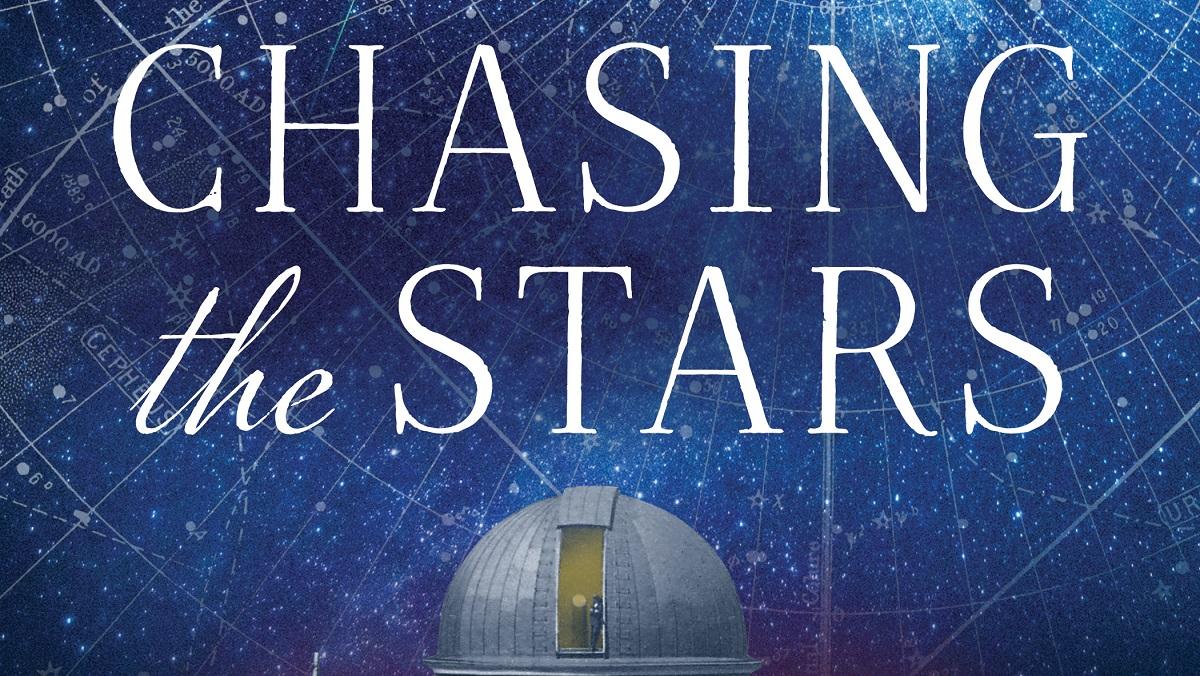A new book from the Wisconsin Historical Society Press traces the history of the University of Wisconsin’s groundbreaking Washburn Observatory, where some of the world’s most cutting-edge astronomical inventions were born. From the earliest Indigenous stargazers to the women who worked as the first human computers, along with the astronomers who told time by the stars and the scientists who “shrank” the Milky Way, Chasing the Stars documents the crucial role Wisconsin astronomers have played in the development of modern astrophysics and space astronomy.
Exploring star systems of eclipsing binaries
Our Sun orbits through the disk of our galaxy accompanied by Earth and the rest of the solar system, but without any companion stars. This puts it in the minority, as most stars are found in systems of several stars. Our Sun is also fairly constant in its luminosity, or the amount of energy it radiates into space, unlike many stars in the sky. Many are variable stars, so named because their brightness can vary (or appear to vary), sometimes at regular intervals, sometimes irregularly, on time scales from hours to years.
Two or more stars orbiting each other, which astronomers call a binary star system, can be detected in many ways, including directly seeing their motions through a telescope. In some cases, if the astronomer’s view of their orbit is close enough to edge-on—that is, if the observer’s line of sight passes close enough to the star system’s orbital plane—one star will periodically cross in front of the other, causing eclipses. In the most dramatic cases, such as the variable star Algol in the constellation Perseus, the sudden dip in bright-ness this creates can be seen with the naked eye, but the effect is usually much more subtle.

Detecting and making sense of the slight variations in starlight caused by such eclipses was University of Illinois astronomer Joel Stebbins’s first major scientific success. When he became director of UW–Madison’s Washburn Observatory in 1922, he brought his astronomical photometry techniques and his photoelectric detector technology with him, thereby opening a new chapter in Wisconsin’s astronomical history and in the study of eclipsing binary stars.
To discover such star systems, astronomers make a series of brightness measurements of a star suspected of being an eclipsing variable. In Stebbins’s era, such measurements almost always had to be made relative to one or more comparison stars, which meant a great many observations were necessary to construct a brightness curve showing how the star’s brightness varied. From the brightness curve and the distance to the star system, astronomers deduce important information about the star system, the individual stars, and even the internal structure and possible interactions of the stars themselves. The work of Stebbins and his colleagues helped lay the foundations of modern stellar astrophysics and led to a wide range of applications, from the discovery of exoplanets to the study of binary asteroids.
Stebbins relentlessly pushed the improvement of photometric technology to make Washburn’s instruments more sensitive and versatile. The photometry of eclipsing binaries kept the 15.6-inch Clark refractor in active use producing scientific results well past the time when most telescopes of that vintage had been retired from research. In fact, despite being located in the middle of a growing campus and city, Huffer was measuring brightness curves of eclipsing variables with the 15.6-inch telescope well into the 1950s. By then, he could analyze the data and solve for the orbits of his binary star systems using an early electronic computer, which, though primitive by today’s standards, never could have been dreamed of in 1878 when the Washburn telescope was new.
Mapping the interstellar medium with space reddening
Probably Stebbins’s most far-reaching astronomical research program began around 1930, when he applied his technique for measuring the effective color of a star using photo-electric photometry to stars in selected parts of the Milky Way. This would soon transform scientific understanding of the interstellar medium—the term for the gas and dust particles of matter that fill the space between stars. Because interstellar dust reddens the light of distant stars, quantitative measurements of the reddening of thousands of stars allowed Wisconsin astronomers to map the distribution and strength of such reddening in the Milky Way. Not only was this the beginning of quantitative studies of the interstellar medium (a research strength of Wisconsin astronomers to this day), but it also allowed Stebbins to approximately calculate the true size of our Milky Way Galaxy, the extent of which had been both vastly underestimated and overestimated by previous researchers, who had failed to take the light-absorbing effects of interstellar matter into account.
In the early 20th century, astronomers faced a major question: does light freely traverse the vast spaces between the stars, or does there exist any interstellar matter affecting the light we receive from the stars? Photography showed the existence of starless regions in the sky, but were they empty voids, gaps in the general distribution of stars, or were they opaque clouds of matter, blocking light from more distant starfields? Informed judgments of astronomers soon converged on the latter, namely that there are deep, dark clouds here and there in the heavens. But astronomers still weren’t sure whether these dark nebulosities were local, isolated phenomena in a generally transparent universe, or if this interstellar matter was also spread more thinly across the stellar system, with correspondingly subtle, but widely distributed, effects.
At the time, astronomers were actively grappling with the question of whether gas and dust could have a general dampening effect on the measurable light from distant sources (a phenomenon known as interstellar extinction). The outcome of the question was crucial in understanding the distances and distribution of stars, star clusters, galaxies, and other celestial objects … Stebbins immediately recognized that his own specialty of photoelectric photometry could be applied to the problem. By measuring the light of a given star twice, once through a yellow filter and then again through a blue filter, Stebbins could arrive at a “color index”—in effect, a quantitative measurement of stellar color. Reddish stars would be comparatively dim through the blue filter relative to the yellow filter, and bluer stars would be comparatively bright relative to the yellow. The photoelectric photometer could measure those color differences precisely.

Stebbins hypothesized that some fraction of the interstellar matter would be fine dust, comparable to the dust in our atmosphere that reddens the light of the setting Sun. The amount of reddening, if any, should be related to the total amount of extinction. To test the idea, a colleague at Harvard’s observatory sent Stebbins a list of stars, called type B stars, which were known from their spectra to be very luminous, hot, bluish stars. Stebbins and C. Morse Huffer (who first worked at Washburn as Stebbins’ assistant and eventually obtained a PhD and became an astronomy professor at UW–Madison) used the Washburn refractor to observe the type B stars and measure their colors photometrically. They found the light of many of them was measurably reddened compared to the normal color of a type B star. This was independent confirmation of earlier findings and also took it a step further: interstellar matter was real, some of it was dust, and its effects could be quantified and mapped by photoelectric photometry.
So began Washburn Observatory’s extensive program of mapping the interstellar medium. The laborious photometry of hundreds of type B stars—and later more than a thousand—was done in part by Stebbins, but mostly by Huffer and student assistants … By 1934, Stebbins and Huffer were able to publish hard-won data on 733 stars, revealing for the first time the extent of space reddening, which tracks the interstellar matter as well as the varying intensity of its effects throughout the Milky Way. Based on these new results, Stebbins could show that distances to globular star clusters in our galaxy had been overestimated by factors of two or even three. The use of photometry to measure space reddening also showed that the interstellar medium was very patchy in its effects, but also nearly ubiquitous in the plane of the Milky Way—the regions of the sky outlined by the starfields of our galaxy. In addition, Stebbins showed that the extinction of starlight was mostly caused by dust, rather than gas, and that the total quantity of interstellar matter probably amounted to more mass than that of all the stars in the Milky Way combined. They had discovered that the galaxy was made of much more than stars alone.
Perhaps most important, Stebbins argued that their results could be explained by a very thin layer of obscuring matter extending through the entire disk of our galaxy (coinciding roughly with the visible extent of the Milky Way). Our solar system is immersed in this disk of obscuring matter, so we must look through more of it when we look along the Milky Way and through less of it when we look above and below the Milky Way. Stebbins liked to compare this model of the galaxy to a ham sandwich, in which the bread on the top and bottom represents the general distribution of stars, and the slice of ham in the middle represents the disk of interstellar matter running through the central plane. Further, and very important, if seen from outside, the disk of interstellar matter would appear like the dark layer of dust often seen in other galaxies when viewed edge-on. His results were exactly what we would expect if our galaxy was built like those other galaxies. This added strong support to the theory, still unsettled in the early 1930s, that our galaxy is comparable in structure and appearance to many others seen in the universe.
As Washburn astronomers continued their dedicated observing program of colors of type B stars, the amplified photometer developed by physicist and astronomer Albert Whitford (who succeeded Stebbins as director of the Washburn Observatory in 1948) made it possible to reach dimmer stars. The Washburn team extended the program to still fainter stars at the much larger telescopes at California’s Mount Wilson Observatory, which could reach stars farther south in the sky than could be seen from Madison. The result, in 1940, was the publication of a catalog of the colors of 1,332 type B stars, which widened the mapping of the interstellar matter across the sky and deeper into space.
By the late 1940s, Stebbins and Whitford had developed a very advanced photoelectric photometer using a new type of detector cooled with dry ice, which allowed it to detect light effectively across a very wide range of the spectrum, from the near infrared through the near ultraviolet, in six steps or “colors.” Using their new six-color photometer on the large telescopes at Mount Wilson, the Wisconsin astronomers gathered enough color data on stars to understand the intensity of scattering in the interstellar medium as a function of the wavelength of light. In 1943, Stebbins and Whitford published their highly influential Law of Interstellar Reddening, which they would refine for years afterward, showing how the scattering of light by the interstellar medium increases as the wavelength of the light decreases. This understanding of the effects of interstellar matter provided a foundation for all subsequent studies of the extinction of starlight in our galaxy.
Shrinking the Milky Way Galaxy
The story goes, according to Elizabeth Hart (who was Huffer’s wife and occasionally worked at Washburn as a human computer), that one day, possibly in late 1932, Stebbins emerged from his office exclaiming, “We shrunk the universe!” He was using the word “universe” in an older sense, roughly equivalent to what we would call the galaxy, and specifically our Milky Way Galaxy. It’s a fairly dramatic claim, so what did he mean?
Using his methods of photoelectric photometry, Stebbins had been measuring the colors of globular clusters (spherical collections of hundreds of thousands of stars gravitationally bound to one another) to see whether those nearer the plane of the Milky Way are redder compared to other globular clusters far from the galactic plane. He found a strong effect. Globular clusters near the galactic plane are much redder than those at higher galactic latitudes, which means that their starlight reaches us after passing through a scattering medium, making the light redder and weaker, just as the setting Sun is reddened and weakened by its passage through Earth’s atmosphere.
The Washburn astronomers’ program of measuring the reddening of hundreds of type B stars allowed them to estimate the effects of interstellar matter across much of the sky. Type B stars are far more numerous and more widely distributed than globular clusters.

By using the type B star results to take into account the dimming of the globular clusters caused by interstellar matter, Stebbins was able to show that many of the most distant globular clusters were only about half as distant as previous research had thought. This meant that the galaxy was not so “super,” only about half as large as the accepted measurements in the field at the time, hence Stebbins’s exclamation about “shrinking the universe.”
The work on space reddening, a term Stebbins coined that is still used today, could be pressed a step further. Stebbins showed that the interstellar matter must actually be a large fraction of the mass of the galaxy, comparable or greater than the mass of all the stars put together, and that a large fraction of that matter must be dustlike particles in addition to gas. Thus, Stebbins’s new, smaller measure of the Milky Way galaxy also advanced a new understanding of galaxies other respects: that ours is typical rather than special; that fine dust dominates the medium spanning the space between the stars; and, as later astronomers would show, that this interstellar medium is key to understanding how stars and galaxies form, evolve, and interact. Stebbins’s space reddening research took Wisconsin’s exploration of the galaxy in a fundamentally new direction and constitutes a key contribution in our modern understanding of our universe.

Reprinted with permission by the Wisconsin Historical Society Press © 2024. All rights reserved.





